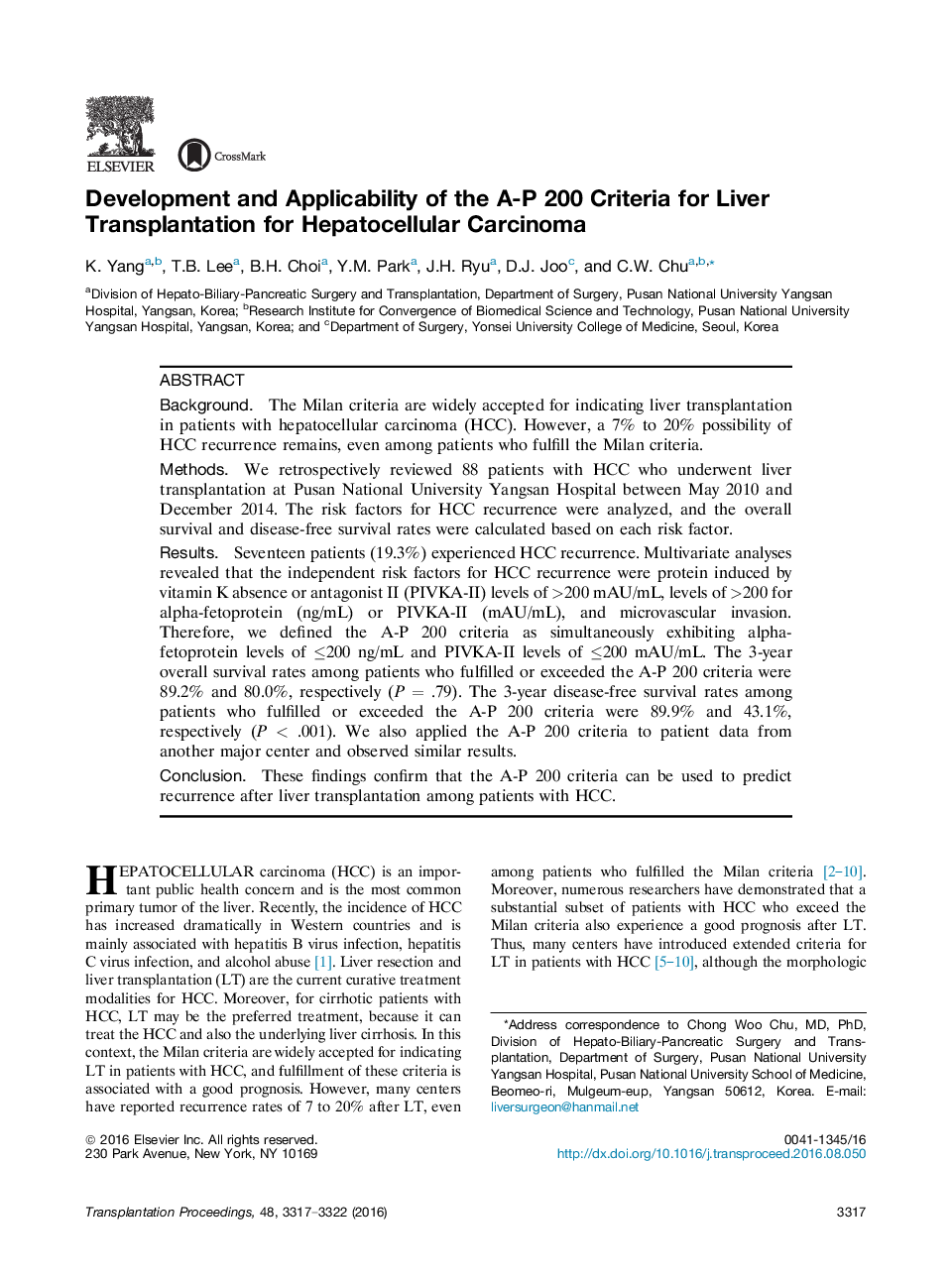| Article ID | Journal | Published Year | Pages | File Type |
|---|---|---|---|---|
| 5729090 | Transplantation Proceedings | 2016 | 6 Pages |
â¢A-P 200 criteria that reflect tumor biology were developed.â¢Patients who fulfilled A-P 200 criteria showed lower recurrence rate.â¢A-P 200 criteria could predict hepatocellular carcinoma recurrence after transplant.
BackgroundThe Milan criteria are widely accepted for indicating liver transplantation in patients with hepatocellular carcinoma (HCC). However, a 7% to 20% possibility of HCC recurrence remains, even among patients who fulfill the Milan criteria.MethodsWe retrospectively reviewed 88 patients with HCC who underwent liver transplantation at Pusan National University Yangsan Hospital between May 2010 and December 2014. The risk factors for HCC recurrence were analyzed, and the overall survival and disease-free survival rates were calculated based on each risk factor.ResultsSeventeen patients (19.3%) experienced HCC recurrence. Multivariate analyses revealed that the independent risk factors for HCC recurrence were protein induced by vitamin K absence or antagonist II (PIVKA-II) levels of >200 mAU/mL, levels of >200 for alpha-fetoprotein (ng/mL) or PIVKA-II (mAU/mL), and microvascular invasion. Therefore, we defined the A-P 200 criteria as simultaneously exhibiting alpha-fetoprotein levels of â¤200 ng/mL and PIVKA-II levels of â¤200 mAU/mL. The 3-year overall survival rates among patients who fulfilled or exceeded the A-P 200 criteria were 89.2% and 80.0%, respectively (P = .79). The 3-year disease-free survival rates among patients who fulfilled or exceeded the A-P 200 criteria were 89.9% and 43.1%, respectively (P < .001). We also applied the A-P 200 criteria to patient data from another major center and observed similar results.ConclusionThese findings confirm that the A-P 200 criteria can be used to predict recurrence after liver transplantation among patients with HCC.
